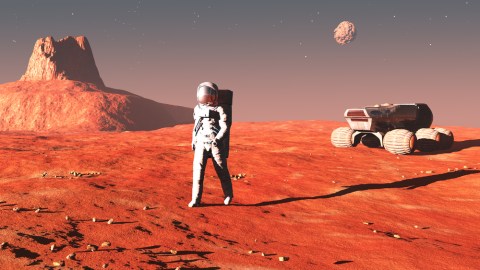NASA Needs to Aim for Mars, says Panel of Scientists

What’s the Latest?
With the Space Shuttle program now firmly in NASA’s rear-view mirror, a panel of scientists has suggested the agency now set its sights on manned expeditions to Mars. The panel’s report, released yesterday by the US National Academy of Sciences, offers several suggestions for how NASA can plan to send astronauts to the red planet. The cost of such pursuits would stretch well into the hundreds of billions of dollars, though scientists argue that the costs to civilization for not having such ambitious long-term goals would be far greater. The hope would be to have American feet touch Martian soil by 2050 though potentially as soon as 2037.
What’s the Big Idea?
It’s been nearly 42 years since Eugene Cernan stepped off the moon back into the Apollo 17 lunar module. In that time not a single human has stepped foot on non-Earth soil. The proposed paths to Mars include a group of missions that would focus on re-landing on the Moon, landing on Mars’ two satellites, and retrieving a small asteroid in near-Earth orbit. These missions would serve as building blocks that would eventually prepare the agency for the big trip to Mars. NASA is currently developing two new spacecrafts — the Space Launch System and its companion ship Orion — with plans for to launch in 2017. These two vehicles would be integral to any manned deep space mission.
Regardless of strategy, the report states plainly that operating procedures will have to be changed if NASA is to once again adopt ambitious long-term goals. This includes a commitment to decades of funding for research and development, as well as a redefining of the space agency’s goals for manned deep space missions.
Read more at Scientific American
Photo credit: SergeyDV/Shutterstock





